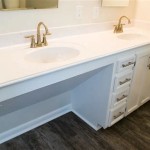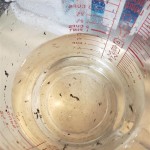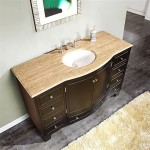How To Remove Moldy Caulking in a Bathroom
Mold growth in bathrooms is a common problem, often appearing in areas where moisture accumulates. This is particularly true for caulking, the sealant used around tubs, showers, sinks, and countertops. Over time, moisture can cause the caulking to deteriorate, creating cracks and crevices where mold can thrive. Removing and replacing moldy caulking is essential for maintaining a healthy and aesthetically pleasing bathroom environment.
Preparing for Removal
Before removing moldy caulking, it's crucial to take necessary precautions to protect yourself from potential health hazards. Mold spores can trigger allergies and respiratory problems. Wear protective gear, including gloves, a mask, and eye protection, to prevent contact with mold spores. Proper ventilation is also essential to minimize exposure.
The first step is to prepare the area where the caulking will be replaced. This involves cleaning the surface to remove any loose debris or dirt. A scraper or putty knife can be used to gently remove loose caulking, while a damp cloth can be used to wipe away any dust or dirt. Allow the area to dry completely before proceeding with the removal process.
Techniques for Removing Moldy Caulking
Several techniques can be used to remove moldy caulking effectively.
1. Using a Utility Knife
A sharp utility knife is a popular tool for removing caulking. Hold the knife at a 45-degree angle to the caulking and gently score along the edge. Once a cut is made, gently pry the caulking away from the surface, using a putty knife or scraper.
2. Using a Caulking Removal Tool
Caulking removal tools are specifically designed to make the process easier. These tools have a narrow blade that fits into the gap between the caulking and the surface, allowing users to cut the caulking without damaging the surrounding area.
3. Using a Heat Gun
For stubborn caulking, a heat gun can be a helpful tool. The heat from the gun softens the caulking, making it easier to remove. Apply the heat gun to the caulking for a few seconds, but be careful not to overheat the surface. After the caulking softens, use a scraper or putty knife to remove it.
Replacing the Caulking
Once the old caulking is removed, the area should be thoroughly cleaned again to remove any remaining residue. The surface should be clean and dry before applying new caulking.
When applying new caulking, it's important to cut the tip of the caulking tube at a 45-degree angle to create a smooth bead. Smooth the caulking with a damp finger or a caulking tool, ensuring a smooth and even application.
Allow the caulking to cure completely according to the manufacturer's instructions. This curing process can take a few hours or days.
Mold can be a stubborn and persistent problem. Removing moldy caulking and applying new sealant are critical steps in ensuring a clean and healthy bathroom environment. By following these instructions and taking necessary precautions, homeowners can effectively deal with mold growth and prevent its recurrence.

Diffe Methods To Safely Remove Moldy Caulk
How To Remove Mold From Caulk Frugally

How To Remove Mold From Shower Caulking Home Like You Mean It

How To Remove Mold From Shower Caulking Tips Tricks And Secrets

How To Remove Mold From Shower Caulking Tips Tricks And Secrets

How To Get Mold Out Of Shower Caulk Hometalk

How To Replace Bathroom Caulking Remove Mold Completely Diy Re

I Found Mold In The Shower Caulking What Should Do

How To Remove Mold From Shower Caulking Tips Tricks And Secrets

How To Clean Moldy Caulk In The Shower
Related Posts







